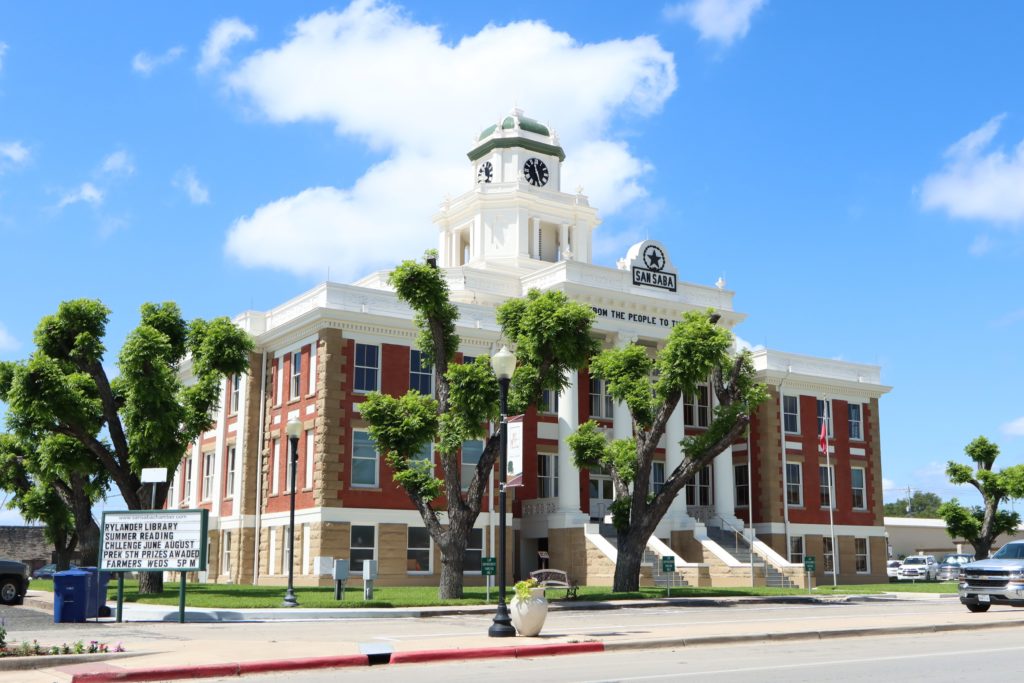County Seat: San Saba * County Population: 5,730 (2020 Census)

The San Saba community celebrated the county’s newly restored courthouse in a rededication ceremony on March 5, 2020.
The Texas Legislature created and organized San Saba County in 1856. The county was first served by a two-story frame courthouse from 1857-1878, followed by a stone structure from 1878-1910. In 1910, the city of San Saba was incorporated. County residents, spurred by news of a railroad connection, authorized a new courthouse. Completed by the time of the first train’s arrival in August 1911, this county capitol serves as the seat of justice “from the people to the people,” as explained on the Recorded Texas Historic Landmark.
The restoration of the San Saba County Courthouse was the result of a 20-year effort with continuous commitment from county leaders and the community, and the assistance of the Texas Historical Commission through two emergency grants and a final construction grant totaling over $5.2 million under the Texas Historic Courthouse Preservation Program.
The process began with preparation of a master plan in 1999, followed by several piecemeal emergency projects to stabilize the roofs and chimneys, replace the electrical service, and repair the interior and exterior stairs. In 2017, the county was finally able to undertake full restoration of the courthouse.
The San Saba County Courthouse has functioned as the county’s official courthouse since its completion in 1911. The county capitol was designed by the architectural firm of Chamberland and Company of Birmingham, Alabama, and Forth Worth, and constructed by the Falls City Construction Company of Louisville, Kentucky.
The courthouse was designed in the Classical Revival style exhibited by its rusticated base, two-story grand columns with Ionic capitals, arched pediments over the main entry doors, and the domed clock tower. The concrete structure is faced with locally quarried San Saba sandstone at its base, and features a pressed red brick body and sheet metal clad cornices, parapets, and tower.
Highlights of the exterior restoration work included: replacement of the sheet metal roofing at the dome with similar material finished to match the historic dark green paint color; reconstruction of missing decorative sheet metal urns with ones fabricated of cast aluminum topping the parapets and tower rooflines; reconstruction of the decorative sheet metal clad railing and parapet with its distinctive union jack pattern; reconstruction of the sheet metal Ionic capitals with glass fiber-reinforced stone; replacement of the upper story aluminum windows with reconstructed wood windows; replacement of the aluminum storefront doors with reconstructed wood door assemblies matching the historic originals; restoration of the clockworks and bell, which now rings on the hour; and painting of sheet metal, cement parging, and window and door assemblies to match the historic paint scheme.
The interior restoration work included the removal of the suspended ceilings to expose the decorative pressed metal ceiling in the district courtroom and the plaster ceilings throughout.
ARCHITEXAS – Architecture, Planning, and Historic Preservation Inc., contributed to this article.









